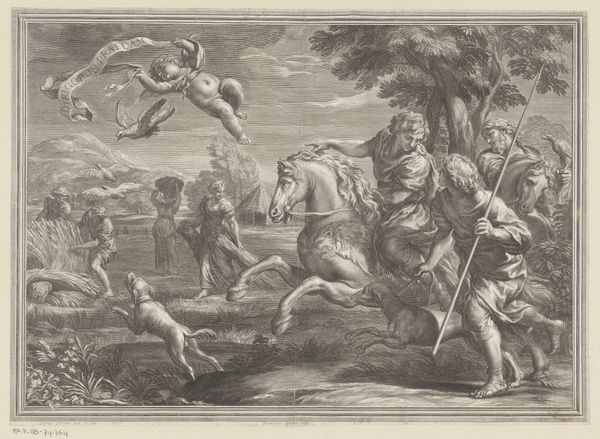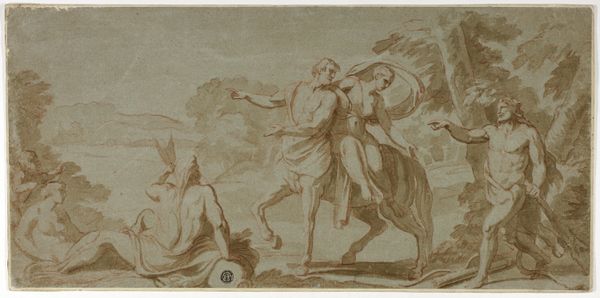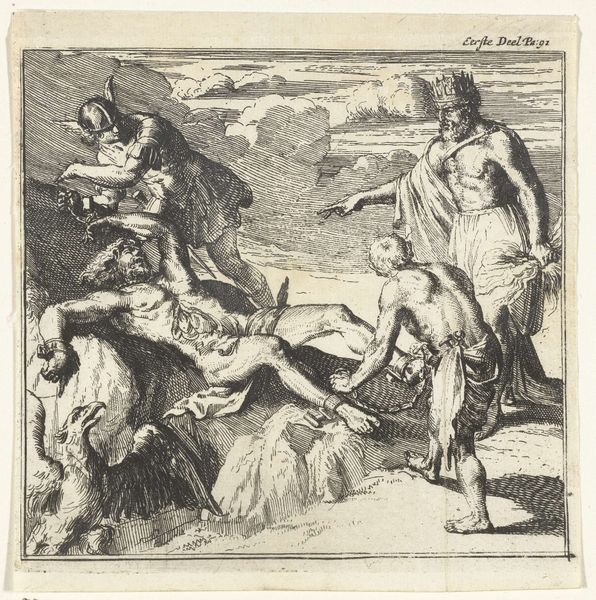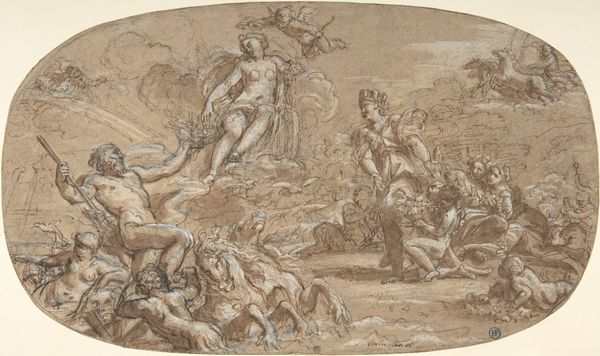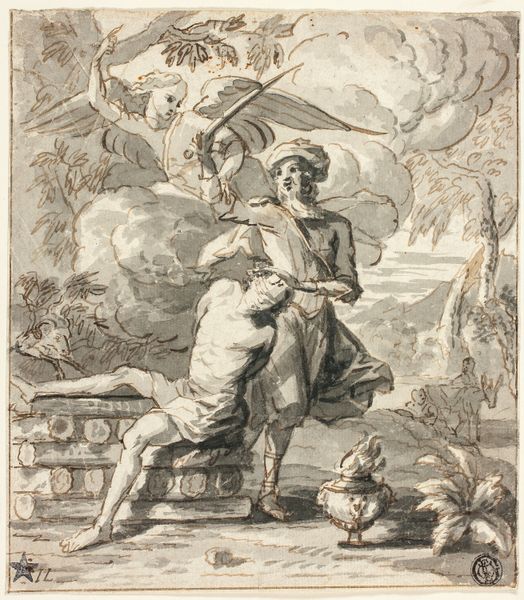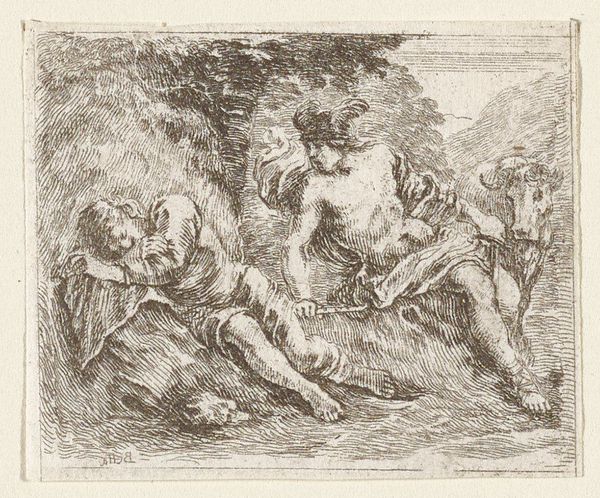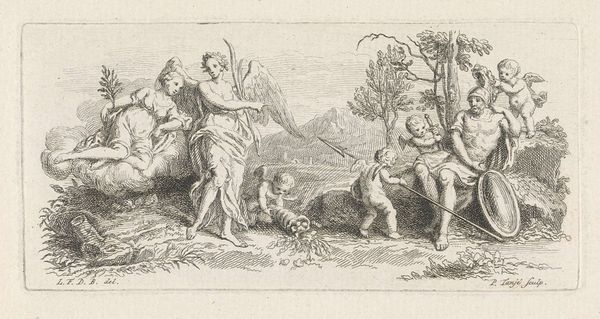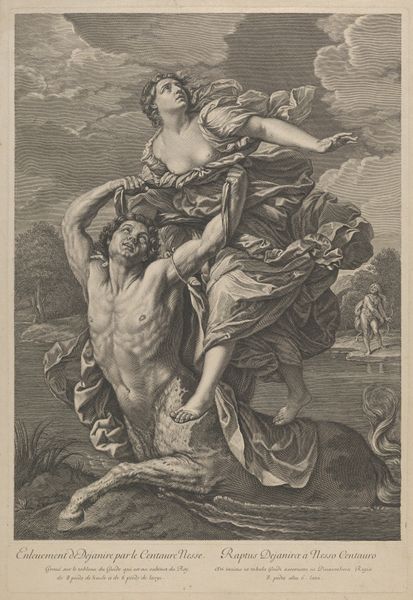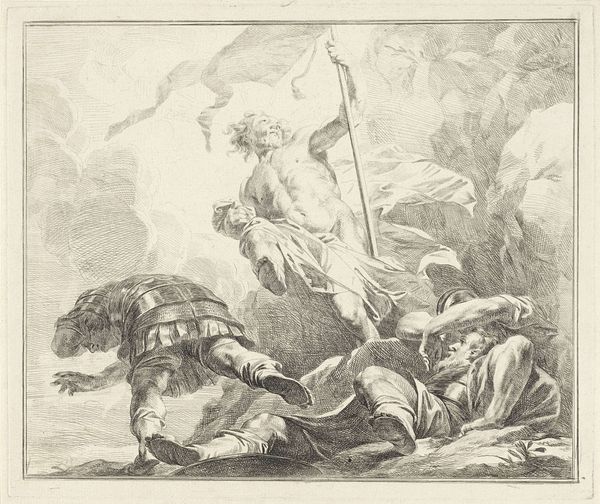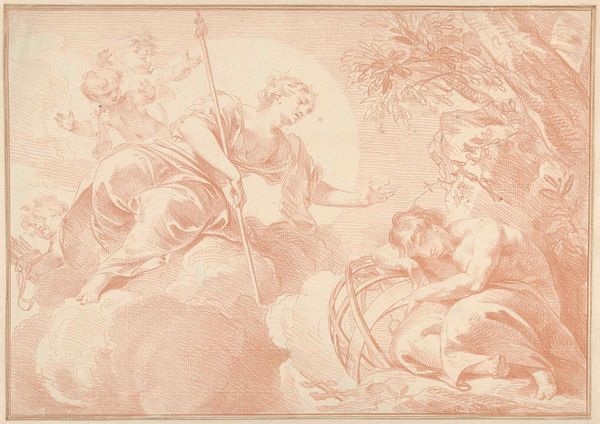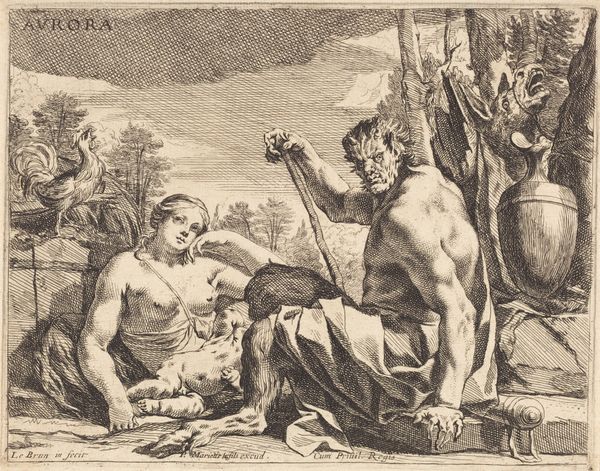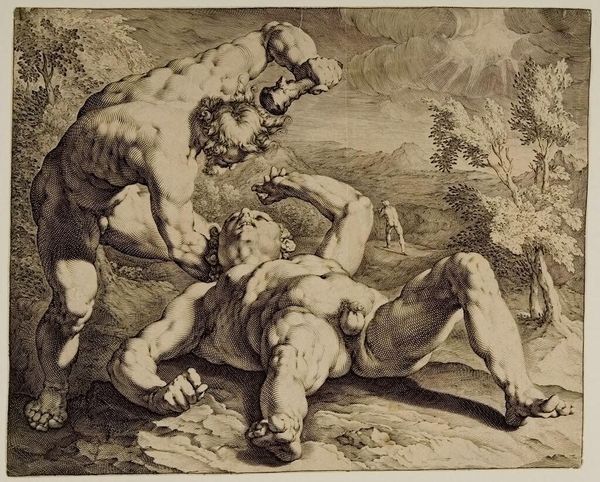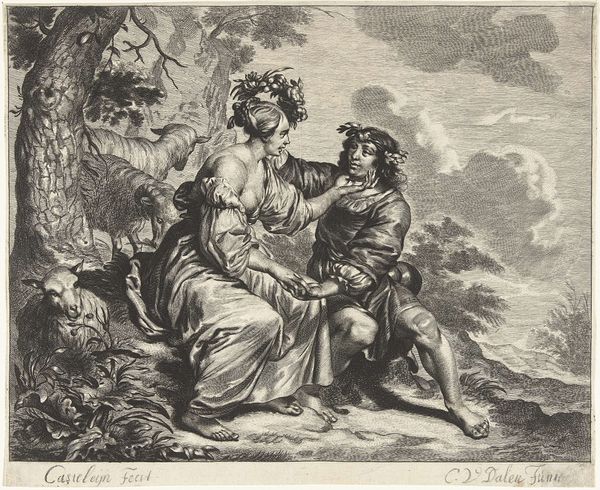
drawing, paper, ink
#
drawing
#
neoclacissism
#
allegory
#
narrative-art
#
landscape
#
figuration
#
paper
#
oil painting
#
ink
#
france
#
portrait drawing
#
history-painting
Dimensions: 12 5/8 x 17 1/2 in. (32.07 x 44.45 cm) (sight)22 1/2 x 26 1/2 x 1 1/2 in. (57.15 x 67.31 x 3.81 cm) (outer frame)
Copyright: Public Domain
Editor: Here we have Jean Jacques Lagrenée's "Rinaldo Abandoning Armida" from around 1785. It's rendered in ink on paper, and the whole scene has this rather dramatic, theatrical air. What grabs you most when you look at this? Curator: Well, first, consider the materiality. Ink, typically used for studies or preparatory sketches, here feels like a finished statement. Why? Lagrenée is deliberately choosing a 'lesser' material. Was he commenting on the lavishness of the aristocracy, the patrons of art? By embracing a humble medium, he seems to be critiquing the excesses surrounding him. Editor: That's interesting. So, it’s not just about the historical narrative; it’s about the physical making of the artwork, the materials used, and what that might imply? Curator: Exactly! The paper itself also speaks. The textures, likely handmade at that time, contribute to a unique visual experience that differs from a pristine canvas primed for oil paint. It shifts the emphasis from the idealized form of neoclassicism to a focus on the material conditions and labor that made such an image possible. Do you think this would have resonated with audiences at the time? Editor: I hadn't considered the reaction of the Neoclassical audience to the work and materiality, perhaps as a deviation from the norm. It prompts me to reconsider how the materials reflect the artistic values and the potential social context. Curator: Precisely. Looking at how things are made, and the choices behind those decisions, unlocks layers of meaning we often overlook when we just consider the subject matter or style. Editor: I learned how much we can unpack when we look closely at production itself. It has changed how I view this work. Curator: Indeed. Every art piece bears the stamp of its material reality.
Comments
minneapolisinstituteofart over 1 year ago
⋮
A painter and etcher, Lagrenée studied painting with his elder brother, Louis-Jean-François. They worked at the court of Empress Elizabeth II at Saint-Petersburg between 1760 and 1762. Lagrenée became a royal academician in 1775 and exhibited at the Paris Salons until 1804. At the Paris Salon of 1785, Lagrenée exhibited a painting and a drawing, most likely the present sheet, Rinaldo Abandoning Armida, Who Being Unable to Retain Him Faints from Grief. Lagrenée illustrates a scene from Tasso’s epic poem, Jerusalem Delivered (1581), a fantastical account of the First Crusade. The sorceress Armida, a Saracen ally, seduces the Christian warrior Rinaldo in her enchanted garden. His companions, Carlo and Ubaldo travel to Armida’s island in the boat of their guide Fortune and persuade Rinaldo to return to combat. The despairing Armida swoons as her lover departs. Despite the old inscription Caravagio at the lower right, the manner and technique are totally consistent with Lagrenée, who favored the combination of chalk, ink, washes and gouache on blue paper.
Join the conversation
Join millions of artists and users on Artera today and experience the ultimate creative platform.

